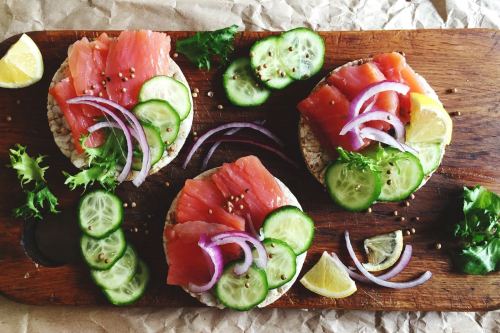Eating seafood is a ‘SMASH’ with these 5 healthy, low-mercury options
Here's why watching your mercury levels matters for your health. Plus, the five, low-mercury fish that the health experts at Parsley Health love.

Remember, mercury can have some pretty concerning effects on the body in high doses. As Parsley Health explains in a recent Instagram post, “Mercury can impact brain function and memory, affect your thyroid, kidneys, sleep, and energy levels.” This is especially important for expectant and breastfeeding moms, as mercury can affect a fetus’s brain and nervous system development.
Here’s the thing: Nearly all fish contain some amounts of mercury (thanks, pollution!). However, you can minimize your risk by sticking with SMASH-choices, all of which are full of healthy fats and protein while staying safely low in mercury levels. The Environmental Protection Agency (EPA) recommends making sure a majority of the fish you eat fall under this SMASH category, while limiting your weekly servings of higher-mercury seafood like tuna, bluefish, grouper, marlin, king mackerel, shark, and swordfish. If you have specific questions about how much of the go-to fish you or a family member is eating each week, then the EPA advisees talking to your health care provider concerning your specific needs.
When you next find yourself in the seafood aisle (the Mediterranean lifestyle demands it!), the folks at Parsley Health say to keep a few other shopping tricks at front of mind. First, buy small fish. “Bigger fish that are higher in the food chain eat smaller ones, which accumulates higher levels of mercury in their fat,” reads the Instagram caption. They also advocate for sourcing fish locally, supporting smaller fisheries, and continuing to eat a diverse mix of fish when you can. “High demands lead to overfishing, harmful catch methods and overuse of antibiotics,” they explain. “Opt for less popular options such as mullet, herring, and mackerel.”
Follow these tips and (fingers crossed) we’ll make sure there’s plenty of fish in the sea for years and years to come.
Wondering about the benefits of fish oil? Here’s the deal.
Of all the fish in the canned food aisle, this one’s the best for you. Oh, and while summer season is still in full swing, here’s how to keep your seafood of choice from sticking to the grill.
Sign Up for Our Daily Newsletter
Get all the latest in wellness, trends, food, fitness, beauty, and more delivered right to your inbox.
Got it, you've been added to our email list.










